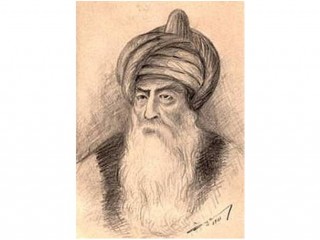
Kodja Mimar Sinan biography
Date of birth : 1489-04-15
Date of death : 1578-07-15
Birthplace : Kaisariya, Anatolia
Nationality : Turkish
Category : Arhitecture and Engineering
Last modified : 2011-10-11
Credited as : architect, Roxelana,
Kodja Mimar Sinan (1489-1578) was one of the greatest of the Ottoman architects. His many buildings include some of the most famous landmarks of the Turkish Empire.
Sinan was born in Kaisariya, Anatolia, the son of Greek Christians, on April 15, 1489. His father's name is unknown, but over his non-Turkish origin no doubt has arisen. Caught up in one of the periodic Ottoman levies aimed at drawing off healthy young minority males, who might become revolutionaries, and turning their energies instead into state service, the youthful Sinan was converted to Islam and became a Janissary. He distinguished himself in this famed military service.
Following the 1521-1522 campaigns against Belgrade and Rhodes, Sinan became chief firework operator. During the war with Persia (1534) he contrived an ingenious ferry operation for the successful transporting of troops across Lake Van. Repeatedly promoted, he was a police magistrate at the time of a Turkish invasion of the Danube Valley, during which he constructed a bridge across the river and gained considerable fame. This turned him to full-time architectural activity.
From the end of the 1530s until he died on July 15, 1578, Sinan labored throughout the Ottoman Empire, from Budapest to Mecca, erecting about 340 public structures. The four great mosques for which he is most famous are the Roxelana (1539), the Princes' (1548), which Sinan described as the work of an apprentice, and the Suleimaniye (1550-1556), the work of a journeyman, all three in Stambul (Istanbul); and the Selim II (1551-1574), the work of a master, in Edirne.
Light but vast domes highlight Sinan's work. Mounted on four-, six-, or eight-sided walls in a style peculiarly Turkish, they encrown extensive interior ceremonial halls. Buttresses bracing the walls were hidden by porches, and conscious attention to exterior appearances led to the development of slim, pencil like, balconied minarets that gave the 16th-century Stambul skyline its magnificent silhouette, which is apparent even today. Interiors were colorfully tiled or paneled in tinted and veined marble with frescoes of flowers or calligraphy decorating the ceilings.
Persian and Byzantine influences, particularly that of Hagia Sophia, can be seen in these structures, as can a trace of Italian Renaissance architecture, but in the work of this Ottoman genius appeared the Turkish style which gave to the reign of Suleiman I (the Magnificent) its cultural distinction. It was in the great central Byzantine dome that Turkish architecture differed from the Persian, which featured open-air central assembly areas flanked by small-domed side halls and massive minarets.
According to a contemporary biographer, the poet Mustafa Sai, Sinan was responsible, in all, for 81 mosques, including domes for the Kaaba, the holy sanctuary at Mecca; 50 chapels or small mosques; 55 madrasahs (schools); 7 Koran schools; 19 tombs; 3 hospitals; 7 aqueducts, including those of Stambul; 8 bridges; 17 poor kitchens; 3 warehouses; 18 caravansaries (fortified rest houses for travelers); 33 palaces, such as those at Scutari; and 33 baths, all commissioned by Suleiman, his daughter Mihrimah, his successors, or noblemen of the empire. Sinan is sometimes credited also with the mosque of Selim I, erected in Stambul in 1521-1522 by the Sultan's son Suleiman I, but this is in doubt: his building period seems to have begun in the late 1530s, when he was about 50 years old. He inspired many followers, including a younger Sinan with whom he is sometimes confused, hence the designation "Kodja" (the Elder). The master's favorite pupil was Yusuf, who is alleged to have built the Mogul palaces at Agra, Delhi, and Lahore.
An article on Sinan appears in volume 13 of McGraw-Hill's Encyclopedia of World Art (1965). For background on Sinan see Ulya Vogt-Göknil, Living Architecture: Ottoman (1966). Also consult Behçet à nsal, Turkish Islamic Architecture (1959); Ernst Kühnel, Islamic Art and Architecture (1962; trans. 1966); and Ekrem Akurgal, Cyril Mango, and Richard Ettinghausen, Treasures of Turkey (1966).
Stratton, Arthur, Sina, New York, Scribner 1971, 1972. □
















